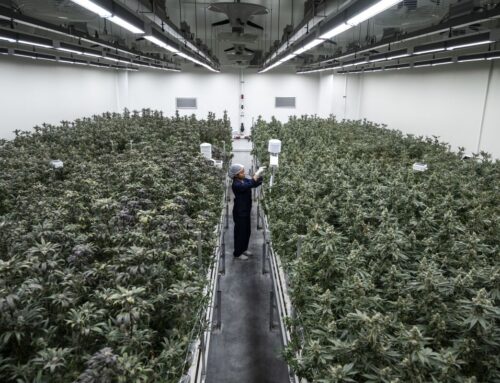Wins for Wildlife: How We Worked to Site Wind Energy and Protect Wildlife in the Gulf of M
April 18, 2025

Offshore wind holds incredible potential to help meet the clean energy goals needed for a healthy climate. The Gulf of Maine, in particular, with its strong, sustained winds, is one of the best locations in the world to harness renewable wind energy. However, offshore wind development must be sited with care to avoid potential conflicts with wildlife and the fishing industry.
Between 2022 and 2024, the Bureau of Ocean Energy Management (BOEM) worked with the conservation community, fishing interests, and many others to identify areas in the Gulf of Maine where wind turbines should and should not be placed. Based on this community engagement, the Final Wind Energy Area, released in March 2024, was reduced by 85% from the initial proposal. Large areas of the ocean were removed from consideration based on expert and public feedback to protect commercial fisheries, marine mammals—including the endangered North Atlantic right whale—and seabird habitats such as nesting islands, diving bird foraging areas, and migratory pathways.
BOEM’s comprehensive process resulted in a refined Wind Energy Area that allows for the robust deployment of clean, renewable energy in the Gulf of Maine while respecting existing uses and the natural environment.
This blog details how the initial proposed area was whittled down throughout the process.
Request for Interest (RFI) Area – August 2022
The initial area considered by BOEM, the RFI Area, encompassed more than 13.7 million acres in the Gulf of Maine, essentially the entire federally-owned Gulf with exceptions for certain shipping lanes and Stellwagen Bank National Marine Sanctuary.

In comments, conservationists sought the removal of several areas of high conflict, including:
- Several Habitat Management Areas and Coral Protection Areas;
- Seabird nesting and foraging areas within 24 nautical miles of land; and,
- Certain areas known to be used by North Atlantic right whales.
Call Area – April 2023
In the next stage of the process, BOEM reduced the area under consideration, the Call Area, by more than 3.6 million acres, with:
- A 24 nautical mile (nm) coastal setback; and,
- Exclusion of Cashes Ledge, Jordan Basin Dedicated Habitat Research Area, and several groundfish closure areas.

The conservation community pressed for BOEM to remove additional areas, including Platts Bank, additional seabird nesting and foraging areas, other areas at Cashes Ledge, and additional North Atlantic right whale habitat.
Draft Wind Energy Area – October 2023
BOEM reduced the size of the Call Area by 63% when they published the Draft Wind Energy Area (WEA) to just 3.5 million acres, and avoided:
- The entirety of Lobster Management Area 1, where the overwhelming majority of lobster fishing occurs;
- All North Atlantic right whale Restricted Areas; and,
- Seabird nesting and foraging areas by pushing leases much further off the coasts of Maine and New Hampshire.

The conservation community had one final opportunity to comment on siting issues. A coalition of eNGOs including Maine Audubon and National Wildlife Federation requested that three Secondary Areas under consideration for inclusion by BOEM be excluded from further consideration. These eNGOs also requested two additional areas be removed due to their importance to North Atlantic right whales.
Final Wind Energy Area (WEA) – March 2024
The Final WEA represented another area reduction to about 2 million acres, a 43% reduction from the Draft WEA. The Final WEA removed:
- The two Secondary Areas closest to seabird nesting and foraging areas; and,
- Additional areas near Cashes Ledge, important for commercial and recreational fishing, and for wildlife.

BOEM scheduled its first lease sale in the Gulf of Maine for October 2024, auctioning eight areas within the Final Wind Energy Area with the capacity to produce about 13 gigawatts of energy.

Focus Areas
Certain wildlife communities and commercial concerns drove many of the size reductions.
Marine Mammals
Approximately 15 species of marine mammals are known to occur within the planning area. Millions of acres of potential leases were removed through the siting process, primarily intended to protect the Endangered North Atlantic right whale. Under the Endangered Species Act, much of the Gulf of Maine is designated as “critical habitat” for the species, which primarily uses this region for foraging.
Birds
BOEM’s removal of potential leases within 24nm of shore, including islands, protects millions of acres of Diving Bird Core Use Areas and areas of High Seabird Risk. Other areas of High Seabird Risk in the center of the Call Area, near Cashes Ledge, and on the offshore end of the Call Area were also removed.
Fisheries
Millions of Gulf acres were removed from consideration in order to protect fisheries: the entirety of Lobster Management Area 1 and other areas, including Platts Bank, Georges Bank, Cashes Ledge, Davis Swell, Parker Ridge, Three Dory Ridge, and more.
Benthic
Areas covering important benthic habitats were removed from consideration, including known Coral Protection Areas, Coral-Sponge areas, Habitat Management Areas, Habitat Areas of Particular Concern, and Habitat Research Areas.
Energy
The four areas leased in October 2024 totaled nearly 500,000 acres, with the potential to produce 6.8 GW of energy, enough to power more than 2.3 million homes.

While offshore wind presents potential risks, those risks can be significantly reduced through responsible siting, robust mitigation measures, and ongoing environmental monitoring—ensuring that we can meet our clean energy goals while protecting wildlife every step of the way.
BOEM’s careful siting process and public involvement resolved many of the key conflicts raised by conservationists. The final WEA is large enough to generate substantial clean energy and designed to avoid major ecological conflicts.
This process demonstrates that BOEM’s approach can work—through science-driven planning and engagement, offshore wind can be sited in a way that is environmentally responsible. The hard work of conservationists, industry leaders, and policymakers is paying off, and they have laid the groundwork for the four Gulf of Maine leases to minimize conflicts with wildlife and ocean users.
And the process will continue! Now leaseholders will embark on another rigorous environmental review process to develop project plans and receive permits for construction. This process takes many years to complete and requires the project developer to agree to a suite of minimization, mitigation, and monitoring measures to ensure the continued protection of the Gulf of Maine’s important habitats and wildlife.
Search
RECENT PRESS RELEASES
Related Post


